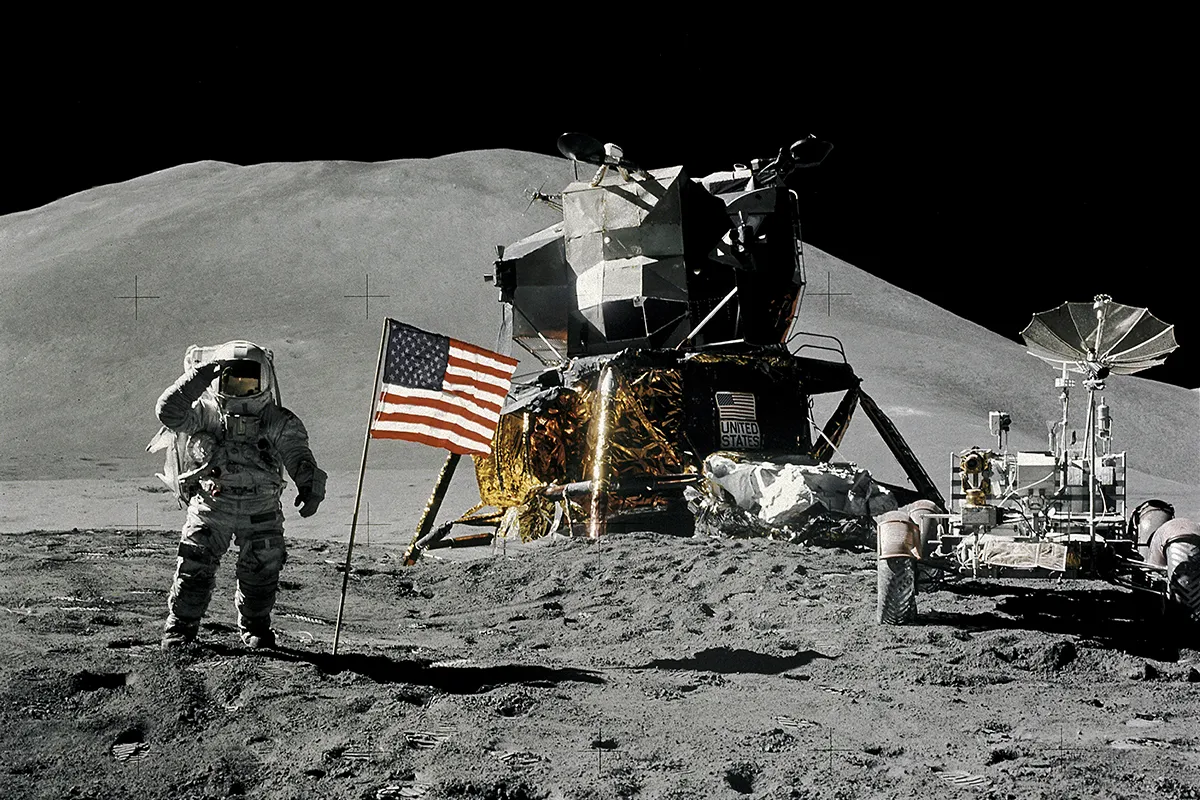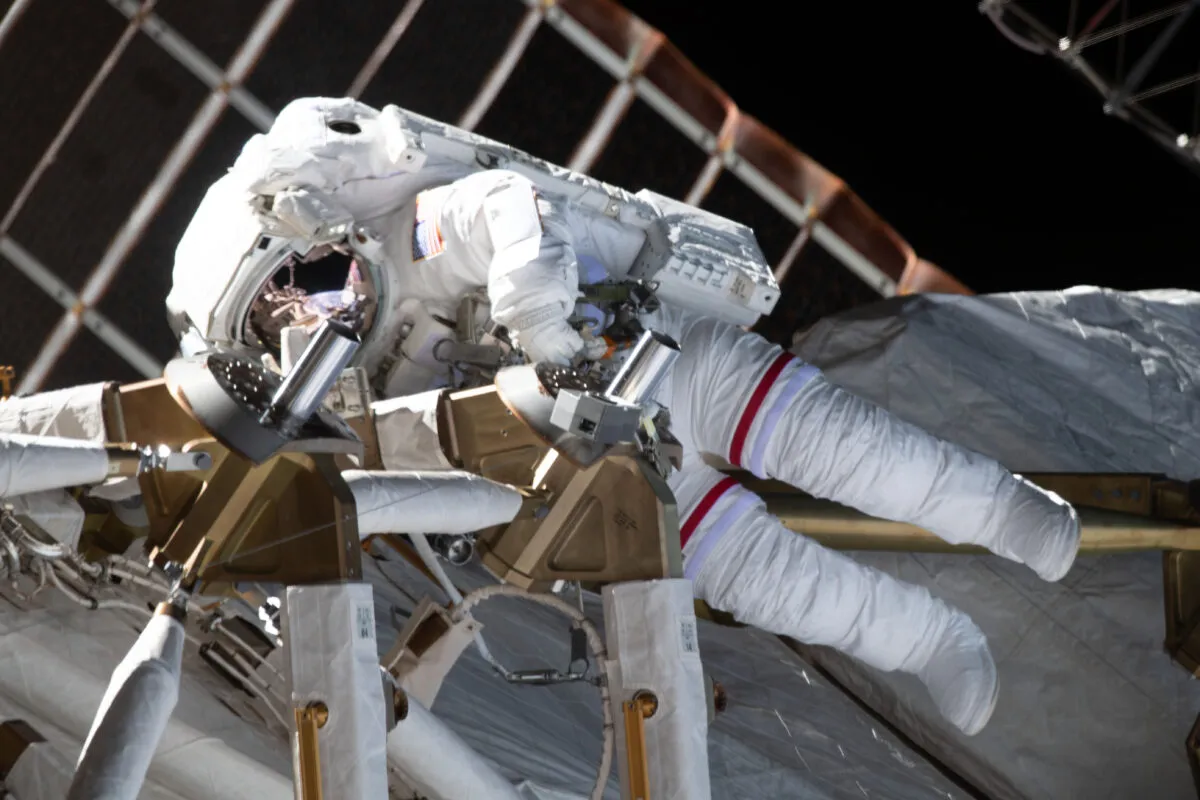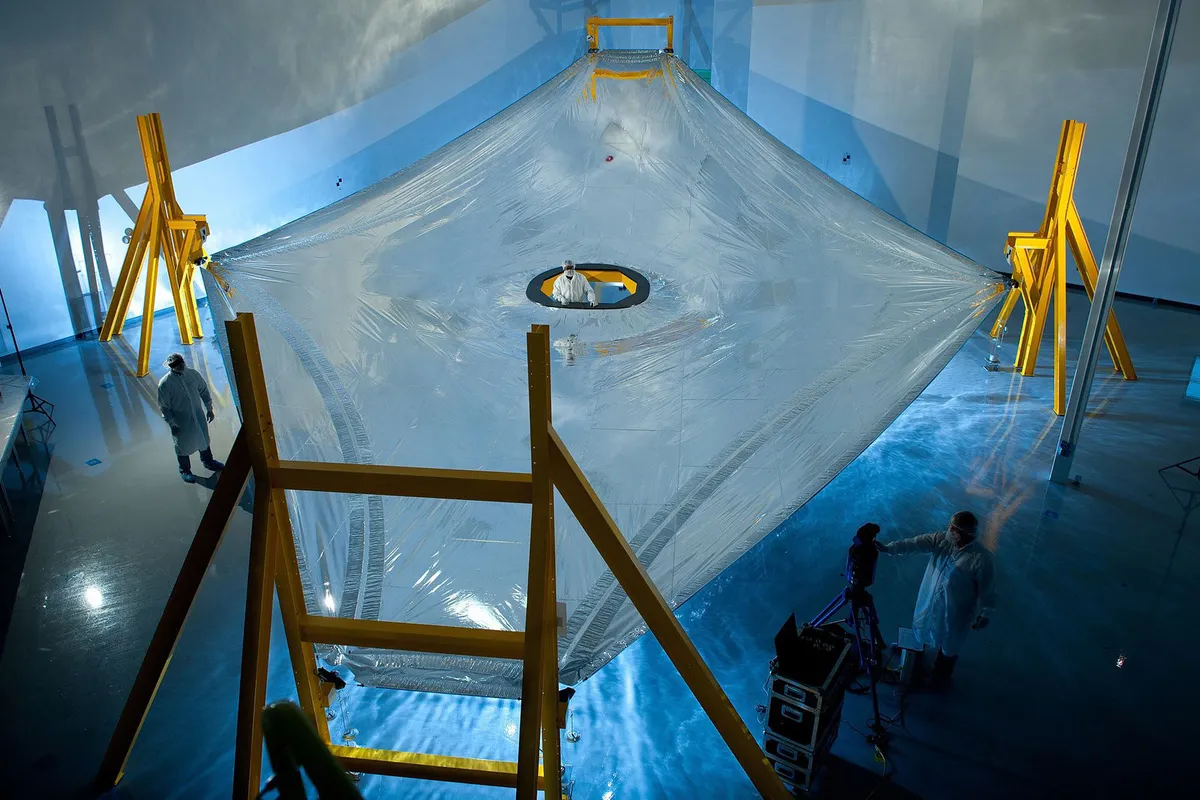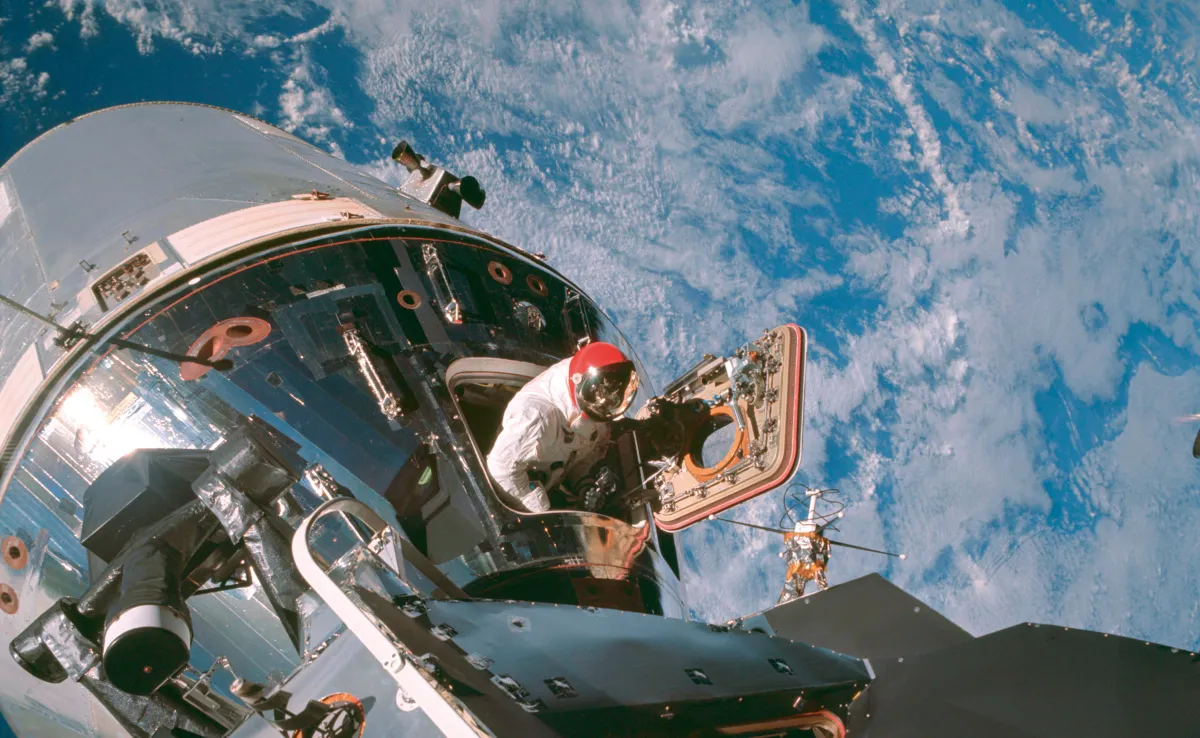As NASA prepares to return human feet to the Moon with its Artemis programme, just how do astronauts survive the extremities of space, and how did the Apollo moonwalkers cope with the extreme temperatures and conditions on the lunar surface?
Planetary bodies without atmospheres, like the Moon, are extremely hostile places for humans to exist in.
But the lunar astronauts were protected from the extreme conditions by their spacesuits.

Today, astronauts face plenty of potential dangers on the International Space Station, and safety will be paramount as we move towards returning humans to the Moon, and surviving the journey to Mars.
To protect an astronaut, a spacesuit must have a pressurised atmosphere, provide oxygen, remove carbon dioxide and maintain a comfortable temperature.
In addition, an astronaut's suit must protect the astronaut from micrometeoroids and hostile radiation, and allow good visibility.

Astronauts must also be able to move easily in and around the spacecraft in their suits, and communicate with their colleagues and ground control.
In the Apollo moon missions, all spacesuits were tailor-made, used only once and then thrown away. How much did a spacesuit cost? Only about $2 million!
The inner portion of the spacesuit was made up of about 20 layers of special types of nylons and a material called Kapton film, made by the company DuPont.

Kapton film can withstand temperatures from -269°C to 400°C, which is necessary on the Moon where temperatures range from about -180°C at night to at least 100°C during the day.
The outside of the spacesuit was covered by Teflon-coated glass fibre, and to reflect heat from the Sun and maintain a comfortable temperature, the spacesuit was coloured white.

Finally, to allow the astronauts to move freely, all of the joints were constructed so that they would bend easily, even when pressurised.
Spacesuits have not changed a great deal since then. There were some developments for the Space Shuttle era, but of course we are now entering the era of privately-funded spaceflight.
Read our story on the NASA Artemis, SpaceX Crew Dragon and Virgin Galactic spacesuits to find out more about how these companies are seeking to protect their astronauts.

